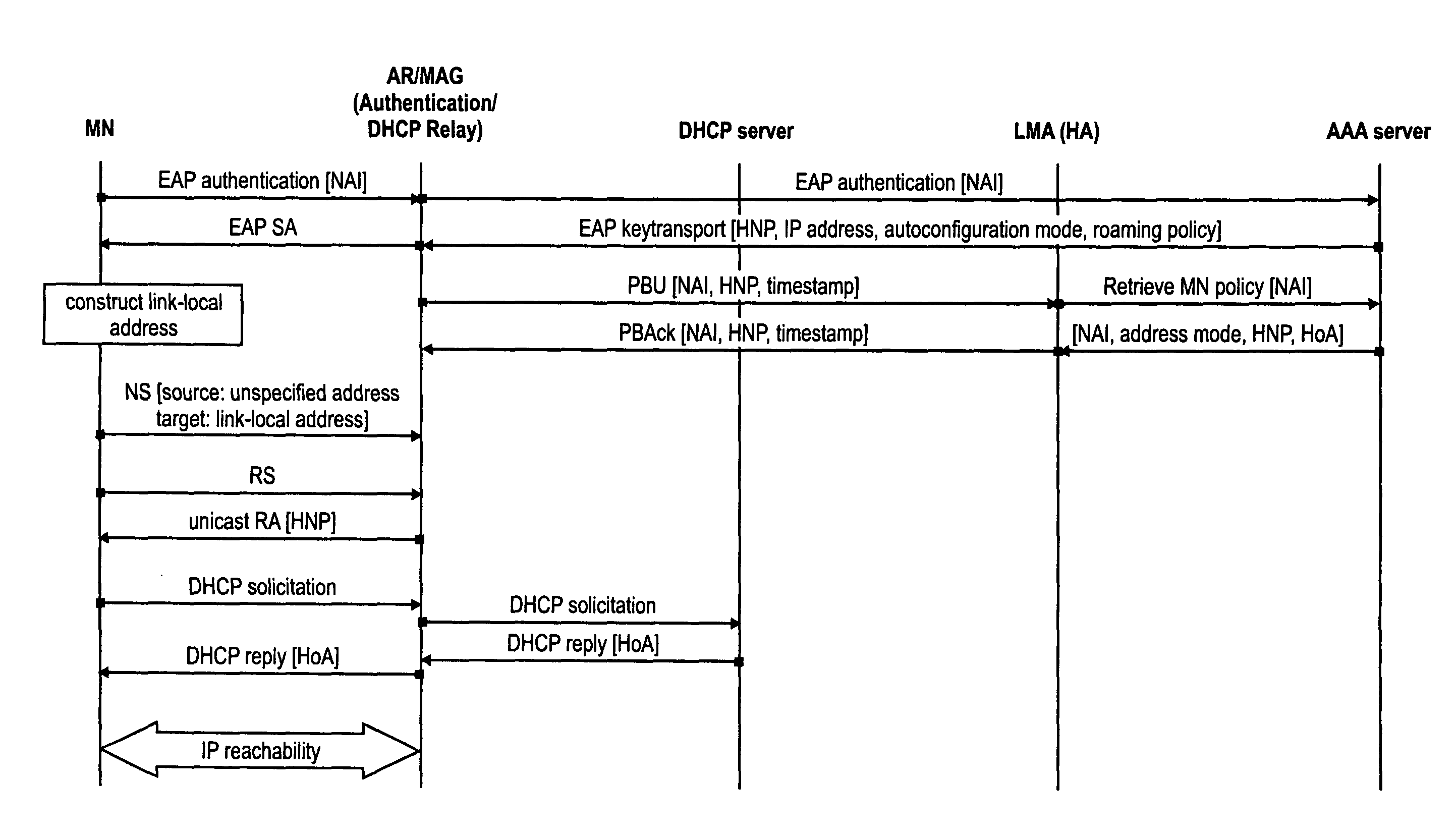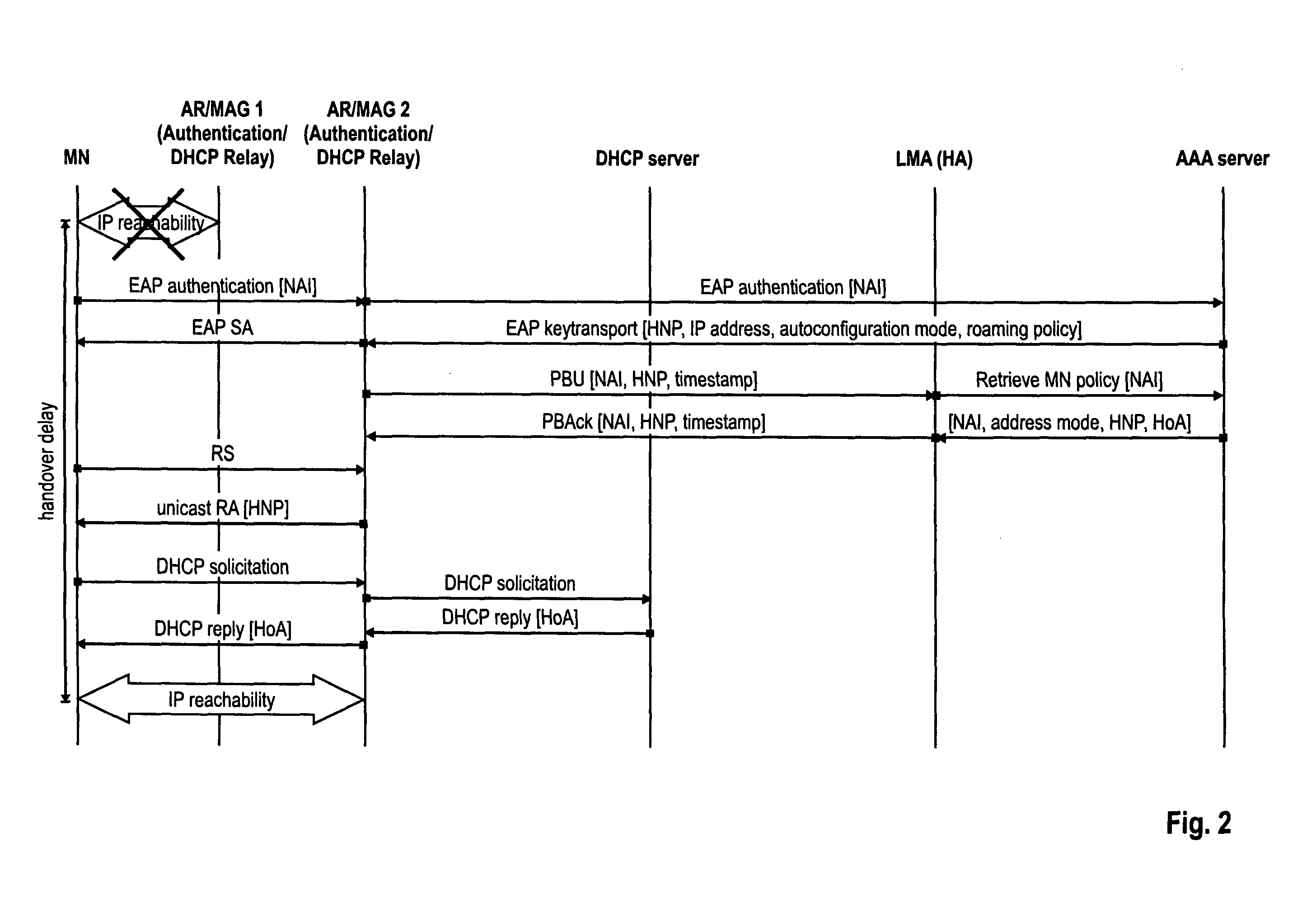Detection of mobility functions implemented in a mobile node
a technology of mobility functions and nodes, applied in the field of detection of mobility functions implemented in mobile nodes, can solve the problems of node connection breaking, network operator not having information about mobile nodes' capabilities, and mobile nodes not being able to communicate these capabilities to the network
- Summary
- Abstract
- Description
- Claims
- Application Information
AI Technical Summary
Benefits of technology
Problems solved by technology
Method used
Image
Examples
Embodiment Construction
[0112]Before discussing the aspects and different exemplary embodiments of the invention in further detail, a definition of several terms frequently used in this document is provided.
[0113]A mobile node is a physical entity within a communication network that is typically mobile in that it may attach to different access networks and even to different access network technologies when moving.
[0114]One node (such as a mobile node) may have several functional entities. A functional entity refers to a software or hardware module that implements and / or offers a predetermined set of functions to other functional entities of a node or the network. An example for such functional entity may be for example the mobility function(s) that can be utilized or offered by a node, which are typically implemented by so-called protocols (such as for example MIPv6 as discussed in the Technological Background section).
[0115]Nodes may have one or more interfaces that attach the node to a communication faci...
PUM
 Login to View More
Login to View More Abstract
Description
Claims
Application Information
 Login to View More
Login to View More - R&D
- Intellectual Property
- Life Sciences
- Materials
- Tech Scout
- Unparalleled Data Quality
- Higher Quality Content
- 60% Fewer Hallucinations
Browse by: Latest US Patents, China's latest patents, Technical Efficacy Thesaurus, Application Domain, Technology Topic, Popular Technical Reports.
© 2025 PatSnap. All rights reserved.Legal|Privacy policy|Modern Slavery Act Transparency Statement|Sitemap|About US| Contact US: help@patsnap.com



